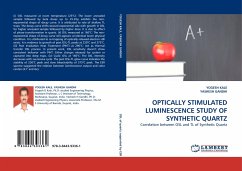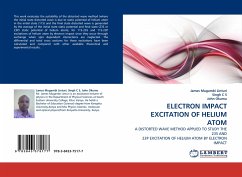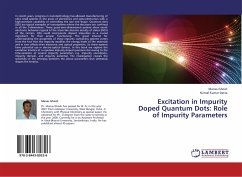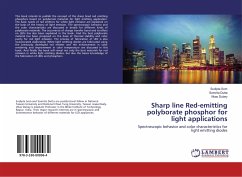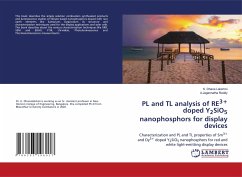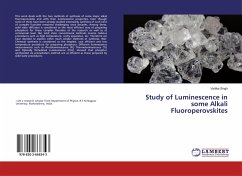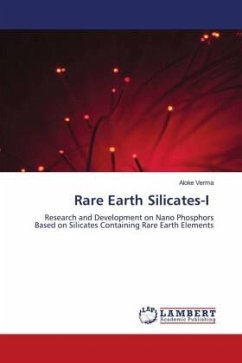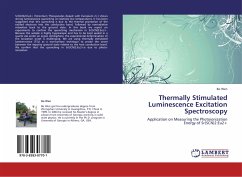
Thermally Stimulated Luminescence Excitation Spectroscopy
Application on Measuring the Photoionization Energy of Sr(SCN)2:Eu2+
Versandkostenfrei!
Versandfertig in 6-10 Tagen
32,99 €
inkl. MwSt.

PAYBACK Punkte
16 °P sammeln!
Sr(SCN)2:Eu2+ (Strontium Thiocyanates doped with Europium 2+) shows strong luminescence quenching at relatively low temperatures. It has been suggested that this quenching is due to the thermal promotion of the excited electrons into the conduction band, followed by nonradiative relaxation back to the ground state. In this book we report on experiments to confirm the quenching mechanism in Sr(SCN)2:Eu2+. Because the sample is highly hygroscopic and has to be kept sealed in a quartz vial under an argon atmosphere, the experimental determination of the ionization onset is challenging. We are usi...
Sr(SCN)2:Eu2+ (Strontium Thiocyanates doped with Europium 2+) shows strong luminescence quenching at relatively low temperatures. It has been suggested that this quenching is due to the thermal promotion of the excited electrons into the conduction band, followed by nonradiative relaxation back to the ground state. In this book we report on experiments to confirm the quenching mechanism in Sr(SCN)2:Eu2+. Because the sample is highly hygroscopic and has to be kept sealed in a quartz vial under an argon atmosphere, the experimental determination of the ionization onset is challenging. We are using thermally stimulated lumines-cence (TSL) as a non-contact technique to probe the onset between the impurity ground state relative to the host conduction band. We confirm that the quenching in Sr(SCN)2:Eu2+is due to photo-ionization.



